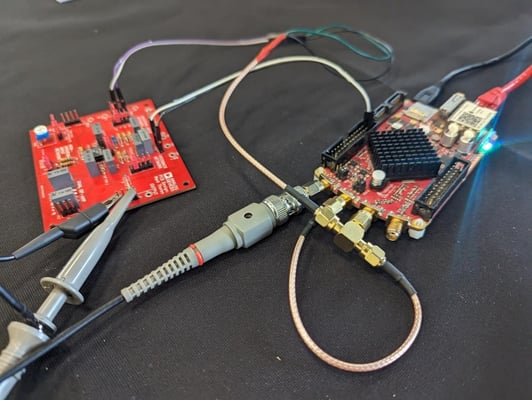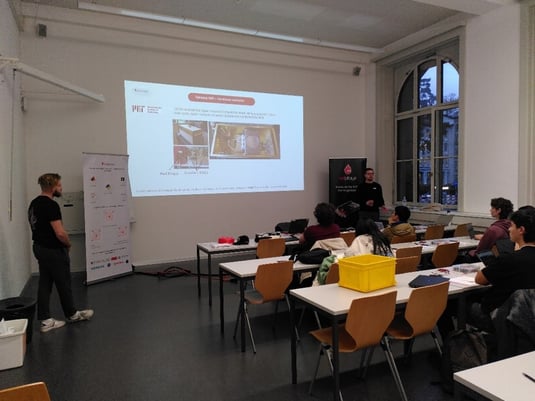A Glimpse into the ETH Zurich Experience
-
Posted by
 Red Pitaya Team
, December 15, 2023
Red Pitaya Team
, December 15, 2023

At Red Pitaya, our recent journey to ETH Zurich was an interesting exploration of different technologies, where we not only witnessed Nuclear Magnetic Resonance (NMR) in action but also ran a workshop and learned about a number of remarkable projects. Read on as we recount the highlights of our trip and shed light on the exciting developments in the realm of open-source MRI.

A Journey into Molecular Worlds
Our first stop was the roadshow event with Thorlabs at the physics department. Then we visited a laboratory specializing in NMR (https://bionmr.ethz.ch/). The focus of the visit was the innovative use of the Red Pitaya board for NMR applications, a technology that allows the determination of the physical and chemical properties of atoms within a molecule. Observing the process, we noted the precise alignment of atomic nuclei under the influence of a strong magnetic field, a key step in NMR. This alignment was followed by the emission of radio frequency signals, indicative of the nuclei returning to their original states. The meticulous detection and analysis of these signals are vital for accurate molecular structure determination, highlighting the intricate and precise nature of NMR technology in probing physical and chemical properties at the atomic level.
The laboratory showcased a compact version of an industrial NMR device, operating at 25 MHz for hydrogen nuclei (protons), where the Red Pitaya played a pivotal role. It measured the spectrum of frequencies emitted by the sample, facilitating the analysis of the composition of the observed liquid. What's more, the Red Pitaya controlled the external peripheral units needed for the NMR machine through its digital pins, and the entire program was scripted in Python, providing a robust foundation for data analysis and representation in graphical form.
The Op-Amp Workshop
Our journey continued with an immersive workshop which we tailored for electronics enthusiasts. Built around operational amplifiers (op-amps) and leveraging the Red Pitaya platform, the workshop aimed to bridge the gap between theory and practical application. Attendees gained many theoretical insights into op-amps, explored Red Pitaya's capabilities, and engaged in a hands-on practical session.

But our technological adventure didn’t end here. We are excited to share that our company is closely involved in a project that is still in its early stages, as our colleagues in the open-source MRI community have pioneered the MaRCoS project for the Red Pitaya.
MaRCoS - Revolutionizing MRI Control Systems
Red Pitaya is actively involved in a project inspired by the MaRCoS (MAgnetic Resonance COntrol System) initiative (https://content.redpitaya.com/blog/an-sdrlab-122-16-controlling-low-field-mri-applications). Developed by an international community of low-field MRI researchers, MaRCoS is an inexpensive, versatile MRI control system. It handles cycle-accurate sequences without limitations, rapid events, or arbitrary waveforms. MaRCoS' adaptability makes it valuable for diverse MRI applications.
Read more about MaRCoS here:
https://arxiv.org/pdf/2208.01616.pdf
https://www.sciencedirect.com/science/article/abs/pii/S1090780723000599
About the Red Pitaya Team
The Red Pitaya editorial team consists of engineers, researchers, and product experts who develop and test cutting-edge open-source test & measurement solutions.
Our mission is to make advanced instrumentation accessible to everyone — from students and educators to leading research labs worldwide.



